Backyard ponds containing colorful fish and plants add beauty and interest to any landscape. Pond fish provide color and character and are an integral part of the pond’s ecosystem.
Whether you keep pond fish for their bright shimmering colors, graceful movement through the water, or just for mosquito control, fish are an important addition to any pond or water garden.
Some pond-keepers name their fish and care for them like any other pet.
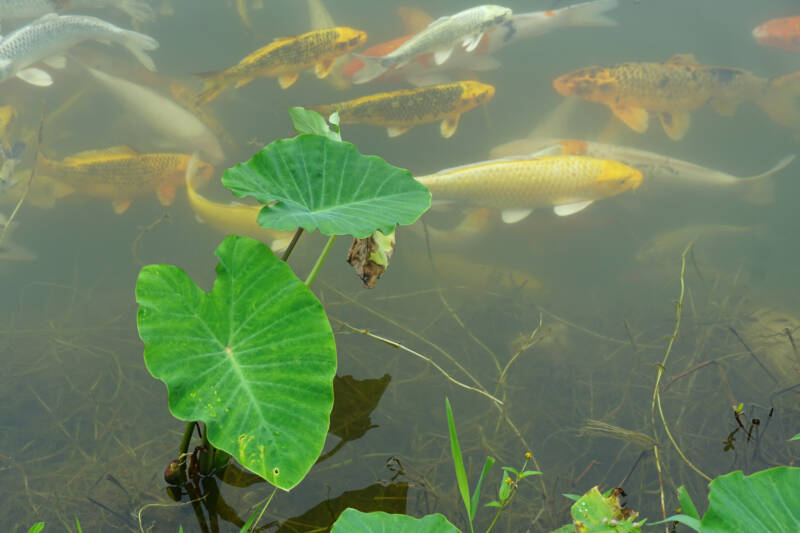
Not all fish that live in ponds are suitable for a backyard water garden.
We’ll explore the different types of ponds you can have and which fish are compatible and will thrive in each type.
[toc]
Natural Farm Ponds
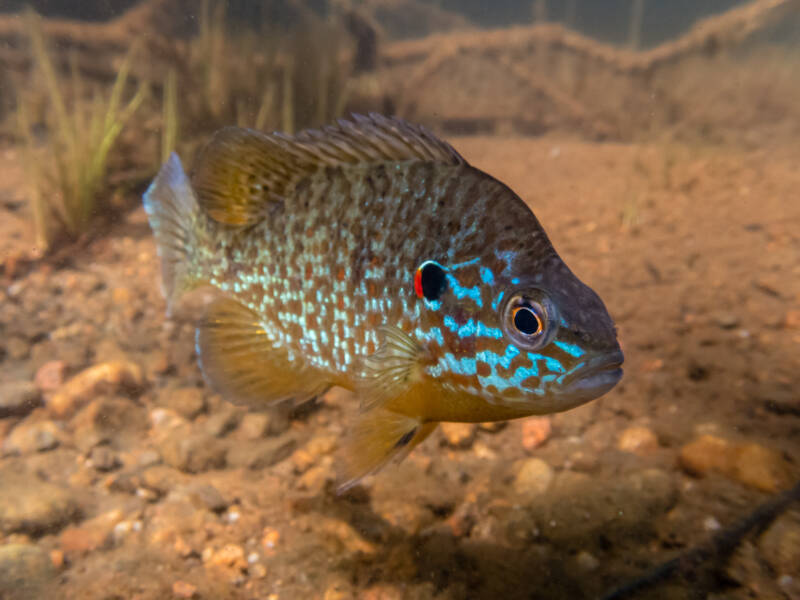
Many man-made ponds were dug by farmers to water cattle or to capture water diverted from the fields.
Unlike rubber-lined garden ponds, farm ponds are usually lined with clay soil. The clay seals the pond, so it stays full of water.
You’ll normally find native game fish living in natural ponds. In North America, this would include:
Native game fish are very territorial and aggressive toward intruders. Some native fish are ferocious predators.

Bass and pickerel would be attracted to colorful, slow-moving goldfish. While goldfish could live in a farm pond, they would be quickly consumed by more aggressive native fish.
Carp are sometimes added to farm ponds to control vegetation. They continuously forage for food, stirring up mud and clouding the water. Carp make it very difficult to keep water lilies and other water garden plants.
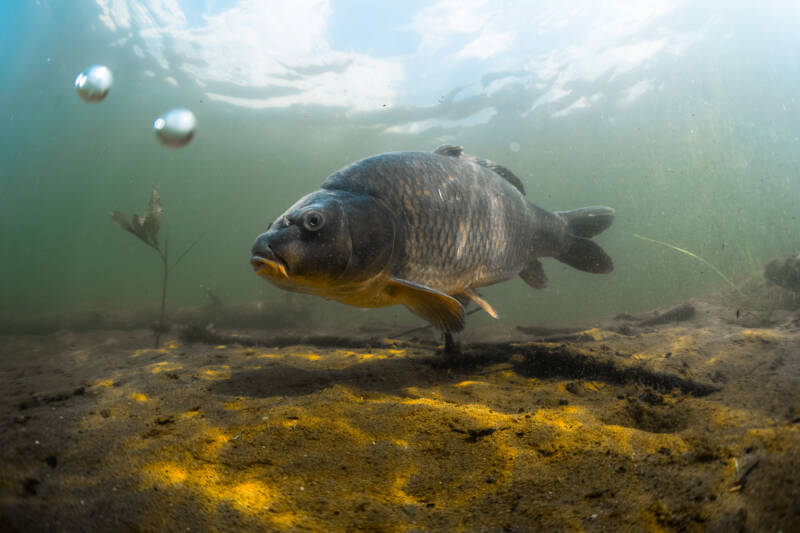
Carp will feed on any plant they can find and uproot potted water lilies.
The bottom line is native fish don’t mix well with goldfish, koi, and other fish bred to be colorful and have long flowing fins.
Koi Ponds
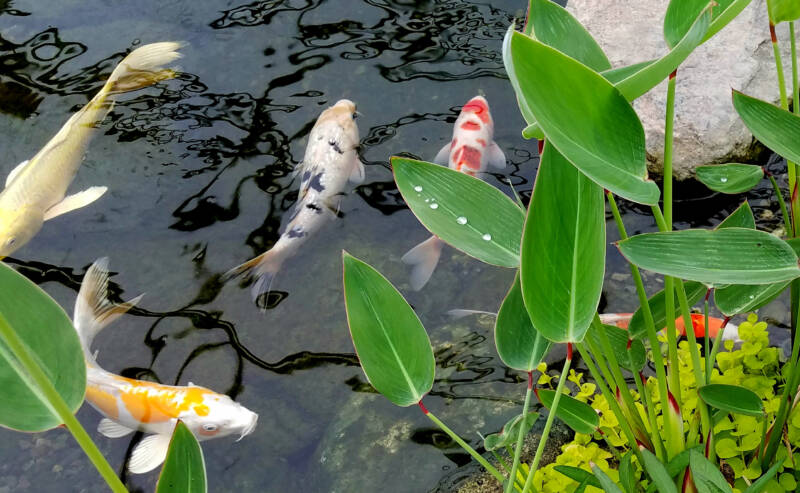
Koi are a type of hybridized carp. They have been kept and selectively bred since the 1800s. Koi are carefully bred for both coloration and shape.
The ideal pond for keeping koi is at least 1000 gallons with plenty of aeration and good filtration. Koi become quite large and require a lot of room to swim and remain healthy.
The fish are very resilient and can over-winter in a frozen pond, provided you maintain an open hole in the ice with an air pump and air stone or floating heater. This is necessary to allow natural gases like hydrogen sulfide and carbon dioxide to escape and let oxygen into the water.
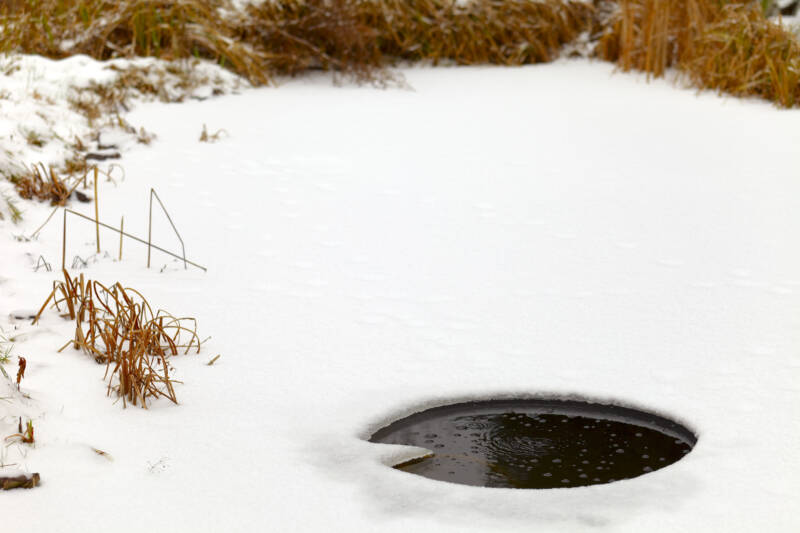
Koi can die if the pond surface is sealed with ice. Since koi are like carp, they will forage on the bottom of the pond. They’ll investigate potted plants and sometimes uproot water lilies.
They will munch on floating plants like water hyacinths and water lettuce. Koi are best kept in a pond without aquatic plants. Some pond-keepers have a separate pond stocked with water lilies and other beautiful aquatic plants.
The water garden or bog pond functions as a natural filter for the koi pond. Water is pumped from the koi pond to the water or bog pond and then flows back to the koi pond.
Koi can be kept in earth-bottom ponds. Many koi farms use earthen ponds to raise koi. They believe the natural minerals and murky algae-filled water promotes the development of beautiful coloration.
But these ponds are not intended for viewing the koi since the fish constantly stir up the mud and sediments. The primary purpose is grow-out the koi and develop coloration before selling them.
Goldfish Ponds
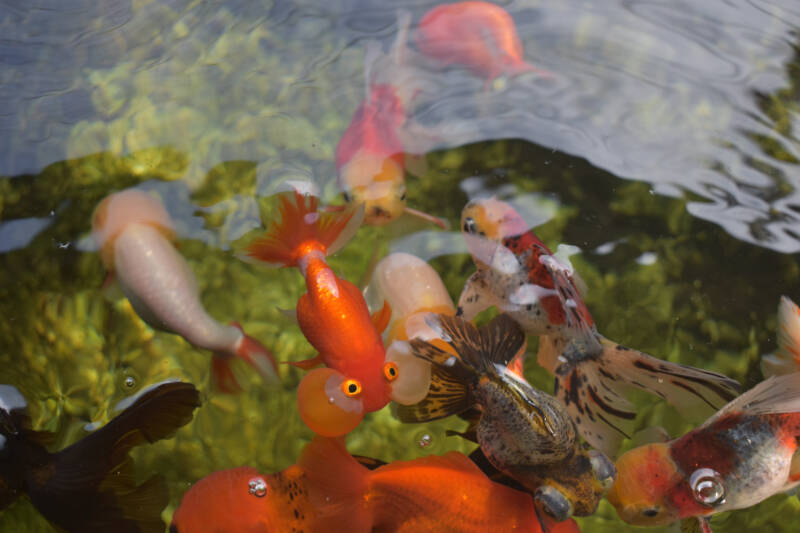
Goldfish are available in a range of shapes and colors. Through selective breeding over the centuries, we now have many varieties of goldfish.
Long, graceful fins and amazing color patterns differentiate the “fancy goldfish” from the common Comet goldfish most people are familiar with.
Goldfish cannot swim as quickly as koi. Koi can even leap out of the pond with a flick of their powerful tails. Goldfish tend to glide around the pond in short bursts of movement.
Fancy goldfish do not like strong water movement. They are weak swimmers and cannot compete with Comets and Shubunkins for food. A splashing waterfall is not recommended when keeping fancies in a pond.
The fancy types of goldfish have delicate fins that aggressive fish easily damage. Fin-nipping happens when fancy goldfish are kept in the same pond with Comets and koi.
Keep the fancies in their own pond. However, Comets and koi can be kept together in the same pond.
Goldfish do not grow as large as koi, making them perfect for smaller ponds and water gardens. Here are some of the most common varieties:
1. Comets

Comets are the most common goldfish. They have long, slender bodies. The fish is orange colored but can also be all white or a combination of orange, red and white, called Sarasa comet.
2. Fantails
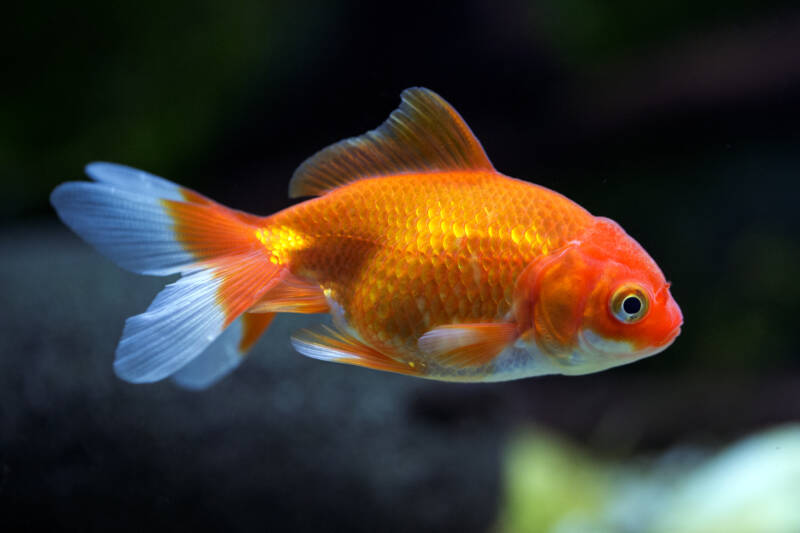
Fantail goldfish have a shorter, more plump body compared to Comets. Their tail fin is split giving them the fantail name. Basic Fantails can be found in a variety of colors (orange, black, white, red).
3. Orandas
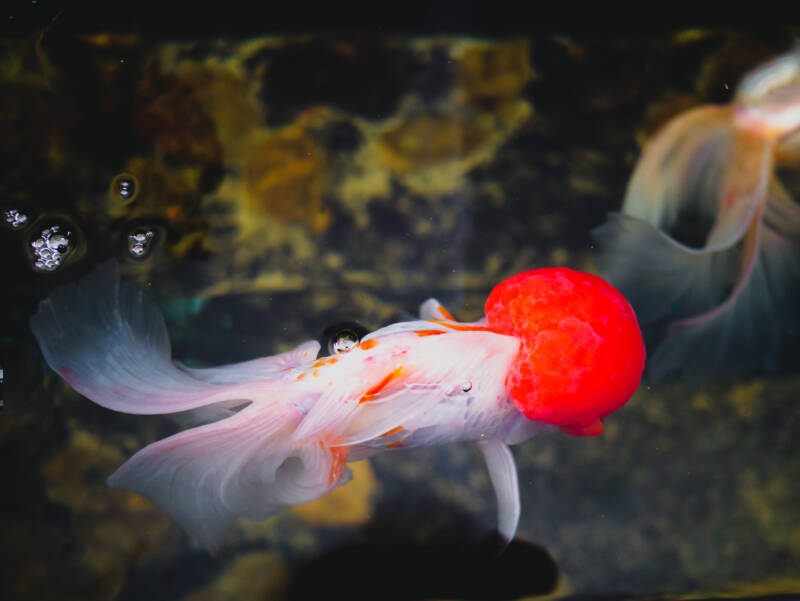
Orandas are a type of fantail. Their distinguishing feature is their bumpy heads.
4. Black Moors
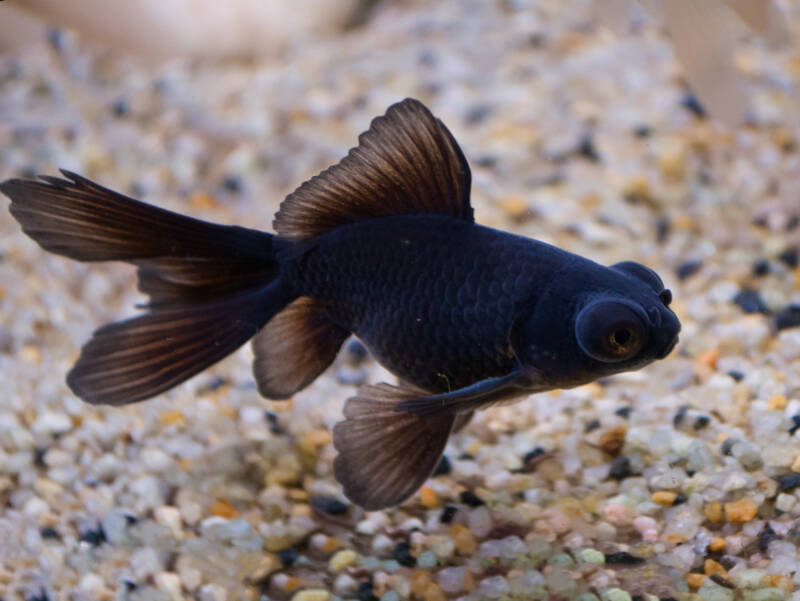
The Black Moor has the body of a fantail. The fish is solid black in color. Its most distinguishing feature is its bulging eyes.
5. Shubunkins
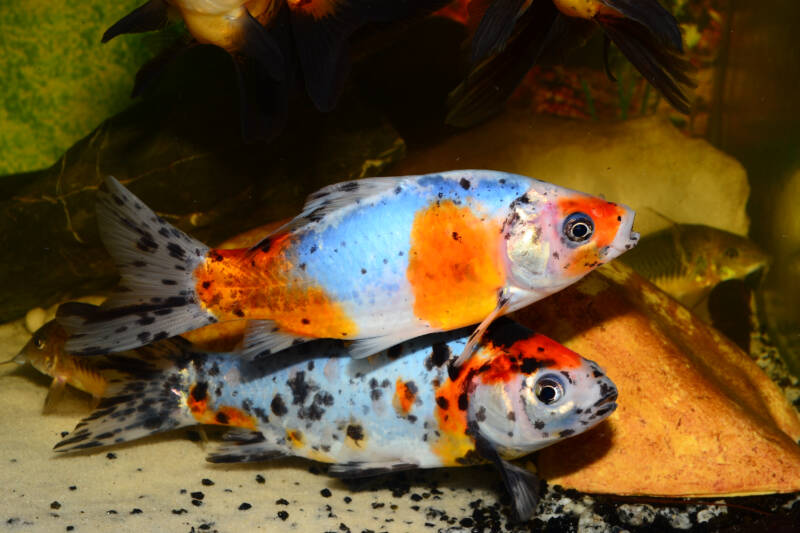
The Shubunkin has a similar body shape to the Comet. The difference is in the way the fish is colored. Shubunkins have a base color of light blue, which is covered with patterns of darker blue, red, brown, white, or black.
6. Ryukins

Ryukins are very similar in shape to the fantails. The main difference is in the slope of the back. The Ryukin has a sharp slope between the head and the dorsal fin.
7. Lionheads
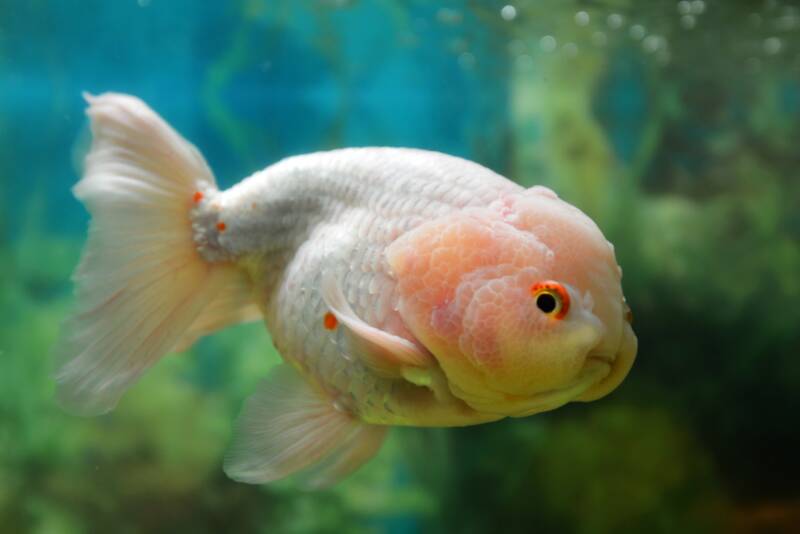
The Lionhead is like the Oranda with a fantail shape and bumpy head. The difference is that the Lionhead completely lacks a dorsal fin.
8. Ranchu
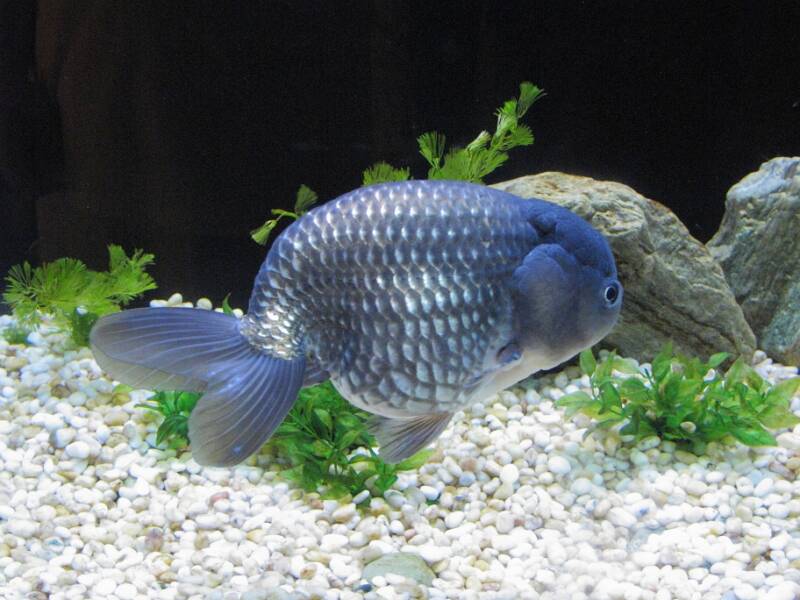
Ranchu are sometimes confused with Lionheads, the difference is where the body meets the tail fins. The Lionhead’s body extends straight out toward the tail fin. The Ranchu’s body drops sharply from the top of the back to the tail fins.
9. Bubble-eye

The Bubble-Eye goldfish has a shape like the fantail. The distinguishing feature of this interesting fish is the liquid-filled sacs that balloon out from below the eye sockets. The eyes of the Bubble-Eye are also pointed upward. A delicate variety.
10. Pearlscale
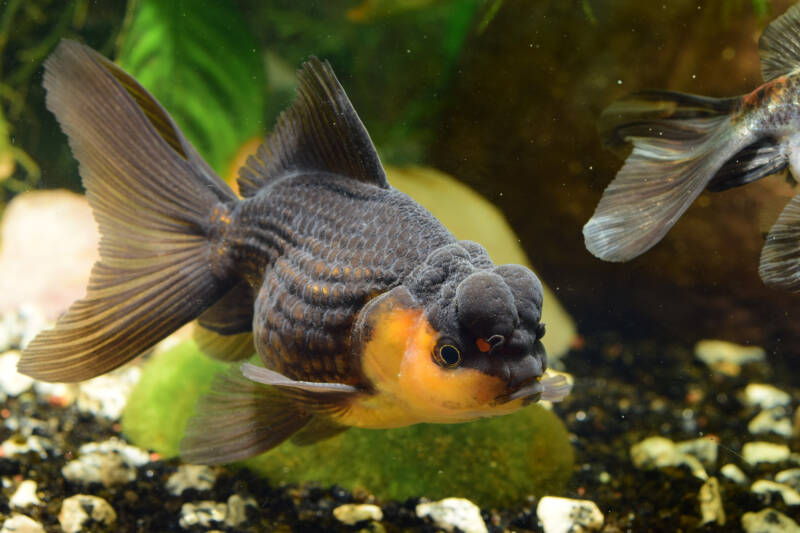
The Pearlscale is also shaped like the common fantail. It gets its name from the dome-shaped pearly scales that cover the body.
Water Gardens
The main feature of a water garden is the collection of floating, potted foliage, flowering water lilies, and bog plants that provide beautiful blooms and leaves.
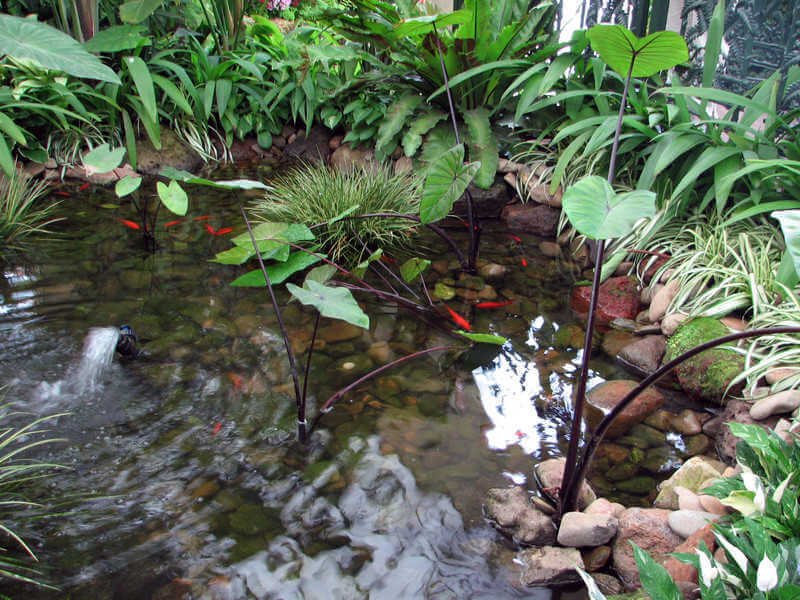
As we’ve discussed, koi like to dig, uproot water lilies and eat floating plants. Never put koi into a water garden!
The best fish for water gardens are Comets and Shubunkins. These varieties are hardy, colorful, and quite active. You’ll enjoy their curiosity as they explore the water garden and investigate the plants.
A waterfall or fountain is a welcome addition. Comets and Shubunkins enjoy the water movement and will often swim directly through the splashing water. These goldfish varieties can be kept in the pond all year long.
If you live in a region where the pond freezes solid, you’ll have to keep an open hole in the ice. This allows for gas exchange to take place so fish won’t be exposed to harmful hydrogen sulfide (rotten egg gas) that can build up under the ice.
An automatic pond heater will ensure your pond remains safe all winter long.
